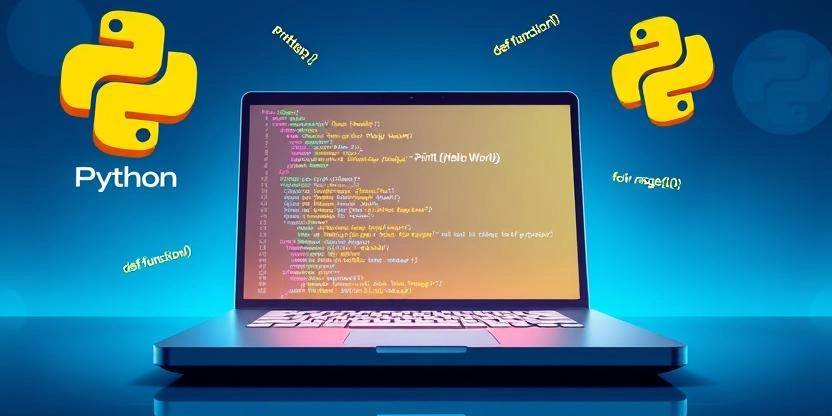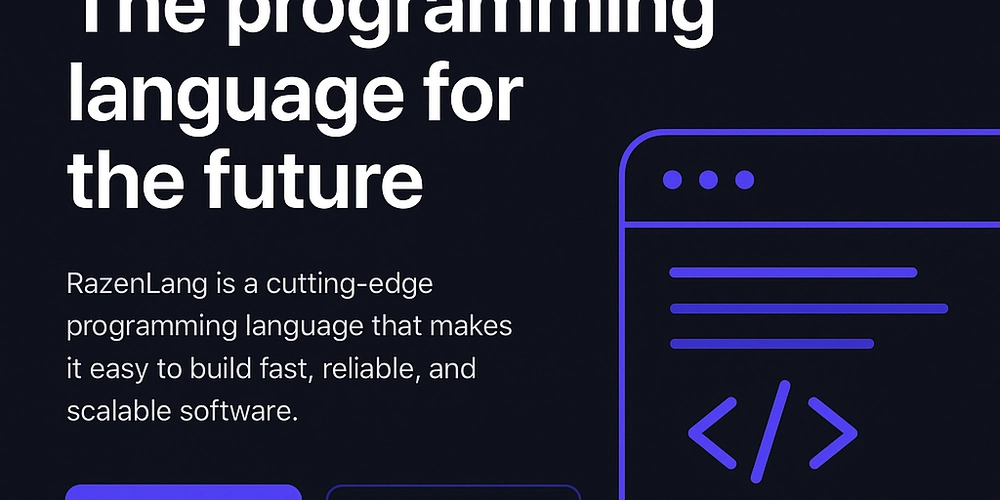Python 101: Back to Basics Part 1
Introduction Python is one of the most popular programming languages in the world. Its simplicity, readability, and vast community support make it an excellent choice for beginners and professionals alike. Whether you're a complete novice or someone refreshing their skills, this guide will take you through the fundamental concepts of Python in an easy-to-understand manner. Why Learn Python? Before diving into coding, let's understand why Python is worth learning: Simple Syntax: Python's syntax is clear and readable, making it easier for beginners to grasp. Versatile: Python is used in web development, data science, machine learning, automation, and more. Large Community: A massive global community ensures that help and resources are always available. Extensive Libraries: Python has a rich ecosystem of libraries like NumPy, Pandas, TensorFlow, and Flask that make development faster and more efficient. Setting Up Python Step 1: Installing Python To start coding in Python, install the latest version from the official website: Python Official Website After installation, verify the installation by running: python --version (Use python3 --version on macOS and Linux.) Step 2: Setting Up an Editor You can write Python code in: IDLE (Python’s built-in editor) VS Code (Recommended) PyCharm (Great for advanced users) Jupyter Notebook (Preferred for data science) Python Basics 1. Printing Output The print() function is used to display text and data. print("Hello, World!") 2. Variables and Data Types Python supports multiple data types, such as strings, integers, and floats. name = "Alice" age = 25 height = 5.6 is_student = True You can check the type of a variable using: print(type(name)) # print(type(age)) # print(type(height)) # print(type(is_student)) # 3. Taking User Input To accept input from users, use the input() function. name = input("Enter your name: ") print("Hello, " + name + "!") 4. Basic Operators Python supports arithmetic and logical operators: x = 10 y = 5 print(x + y) # Addition print(x - y) # Subtraction print(x * y) # Multiplication print(x / y) # Division print(x % y) # Modulus 5. Conditional Statements Python allows decision-making using if, elif, and else. num = int(input("Enter a number: ")) if num > 0: print("Positive number") elif num

Introduction
Python is one of the most popular programming languages in the world. Its simplicity, readability, and vast community support make it an excellent choice for beginners and professionals alike. Whether you're a complete novice or someone refreshing their skills, this guide will take you through the fundamental concepts of Python in an easy-to-understand manner.
Why Learn Python?
Before diving into coding, let's understand why Python is worth learning:
- Simple Syntax: Python's syntax is clear and readable, making it easier for beginners to grasp.
- Versatile: Python is used in web development, data science, machine learning, automation, and more.
- Large Community: A massive global community ensures that help and resources are always available.
- Extensive Libraries: Python has a rich ecosystem of libraries like NumPy, Pandas, TensorFlow, and Flask that make development faster and more efficient.
Setting Up Python
Step 1: Installing Python
To start coding in Python, install the latest version from the official website:
Python Official Website
After installation, verify the installation by running:
python --version
(Use python3 --version on macOS and Linux.)
Step 2: Setting Up an Editor
You can write Python code in:
- IDLE (Python’s built-in editor)
- VS Code (Recommended)
- PyCharm (Great for advanced users)
- Jupyter Notebook (Preferred for data science)
Python Basics
1. Printing Output
The print() function is used to display text and data.
print("Hello, World!")
2. Variables and Data Types
Python supports multiple data types, such as strings, integers, and floats.
name = "Alice"
age = 25
height = 5.6
is_student = True
You can check the type of a variable using:
print(type(name)) #
print(type(age)) #
print(type(height)) #
print(type(is_student)) #
3. Taking User Input
To accept input from users, use the input() function.
name = input("Enter your name: ")
print("Hello, " + name + "!")
4. Basic Operators
Python supports arithmetic and logical operators:
x = 10
y = 5
print(x + y) # Addition
print(x - y) # Subtraction
print(x * y) # Multiplication
print(x / y) # Division
print(x % y) # Modulus
5. Conditional Statements
Python allows decision-making using if, elif, and else.
num = int(input("Enter a number: "))
if num > 0:
print("Positive number")
elif num < 0:
print("Negative number")
else:
print("Zero")
6. Loops in Python
Loops are used for repetition.
For Loop
for i in range(1, 6):
print(i)
While Loop
count = 0
while count < 5:
print(count)
count += 1
7. Functions in Python
Functions help organize and reuse code.
def greet(name):
print("Hello, " + name + "!")
greet("Alice")
Conclusion
This article covered Python's fundamental concepts, from variables to loops and functions. In the next part, we'll explore more advanced topics like data structures, file handling, and object-oriented programming. Stay tuned!
Happy Coding!












































































































































































![[The AI Show Episode 142]: ChatGPT’s New Image Generator, Studio Ghibli Craze and Backlash, Gemini 2.5, OpenAI Academy, 4o Updates, Vibe Marketing & xAI Acquires X](https://www.marketingaiinstitute.com/hubfs/ep%20142%20cover.png)



























































































































![[FREE EBOOKS] The Kubernetes Bible, The Ultimate Linux Shell Scripting Guide & Four More Best Selling Titles](https://www.javacodegeeks.com/wp-content/uploads/2012/12/jcg-logo.jpg)



![From drop-out to software architect with Jason Lengstorf [Podcast #167]](https://cdn.hashnode.com/res/hashnode/image/upload/v1743796461357/f3d19cd7-e6f5-4d7c-8bfc-eb974bc8da68.png?#)





































































































.png?#)





.jpg?#)
































_Christophe_Coat_Alamy.jpg?#)







































































































![Rapidus in Talks With Apple as It Accelerates Toward 2nm Chip Production [Report]](https://www.iclarified.com/images/news/96937/96937/96937-640.jpg)








































































































































